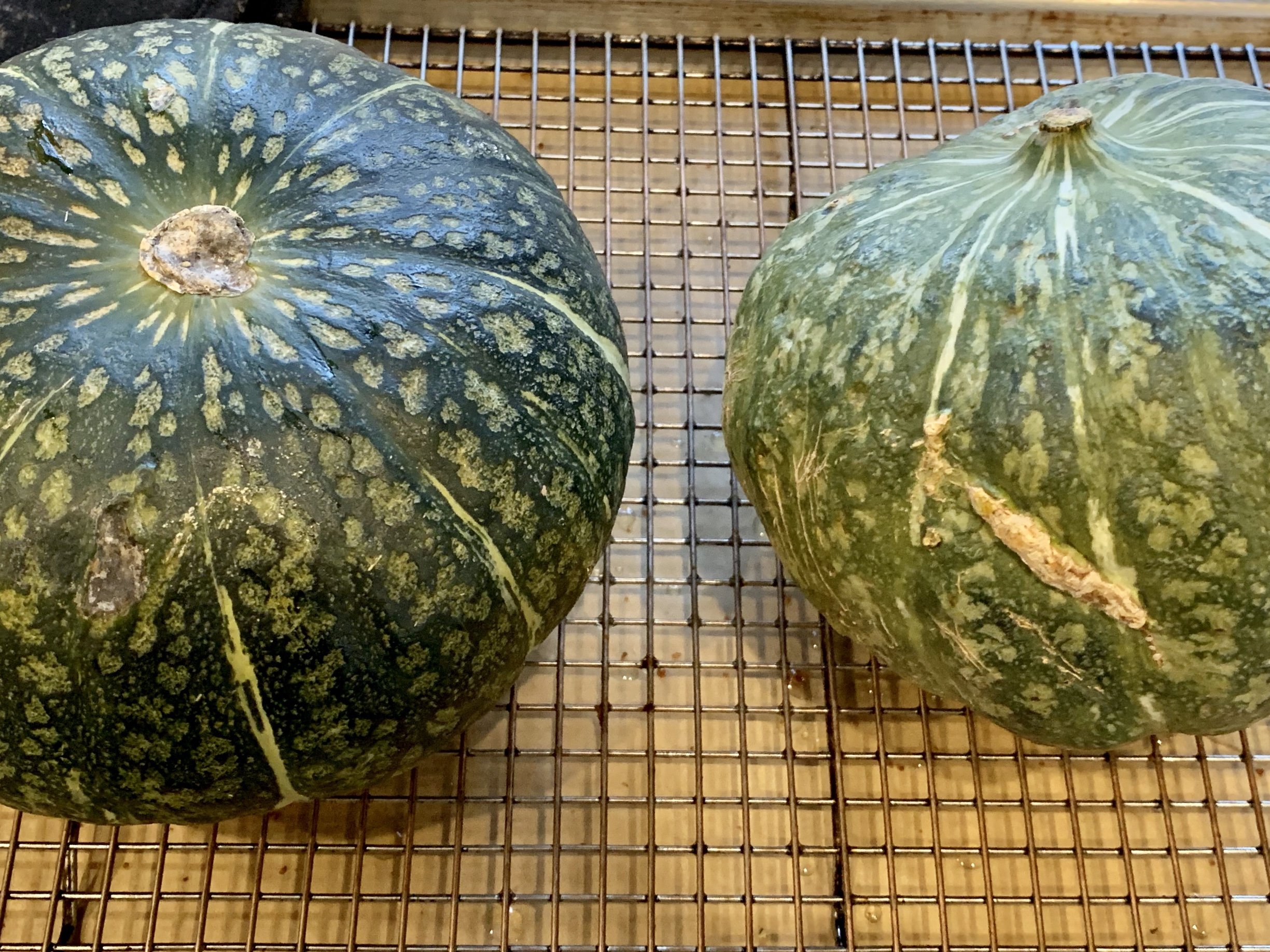Kabocha: discovering a Japanese treasure
Until recently, my experience with squash had been largely limited to butternut, zucchini, and summer squash, plus the occasional canned pumpkin in pies if I'm being loose with the definition. This fall, that all change when I discovered the king of squash: the kabocha.Forget everything you thought you knew about squash. This "Japanese pumpkin" might as well be it's own category. It's been described as a drier, less sweet cousin to the Japanese sweet potato, but that description fails to capture the nutty flavor and satisfying texture that is so uncannily well balanced. It's wonderful addition to any meal warm out of the oven, but equally viable as a snack straight from the fridge. Have it plain, or sprinkled with some cinnamon or curry powder.Preparing it is simple: heat an oven to 400 °F and roast it whole for 20 minutes. Take it out and slice it in half. Scoop out the seeds, cut it into thick slices and return it to the oven for 40 minutes. That's all.The only challenge is identifying a good one. I had great luck early on, but most recently started stumbling across specimens that were wetter and more fibrous (what I describe to my wife as "squashy"). That's no good. The texture should be starchy and slightly crumbly, almost like the yolk of a hard boiled egg. I still haven't completely cracked the code of identifying them from the outside, but a deep green color, smaller size, and smooth texture is usually bad news. Larger size, a heavier weight, greyish green with a small orange patch, and uglier rough patches are usually good omen. In the picture above, the squash on the right was superior. Despite the sometimes unattractive appearance, the skin is completely edible (though not required; my wife doesn't care for it, but I gladly take leftovers).With several misses recently, I thought the season must be coming to an end, but during a trip to the Midwest I discovered good squash could still be found.Be forewarned, kabocha are highly addictive. I'm convinced scientists will discover a dependence inducing substance lies within the dense orange flesh. Fortunately, they appear to be relatively healthy: high in fiber and low in calories and rich enough in vitamin A that I've wondered if the beta-carotene is more responsible for my winter than than my tropical vacation.I have been able to find kabocha at many standard supermarkets, but they are clearly a fourth choice in the stock list of winter squashes after butternut, acorn, and spaghetti. They have inexplicably disappeared from my local Whole Foods, and I tend to hoard them when I discover a promising batch and the few reliable hideouts that supply my fix. They seem to keep well: I've never had one rot or go bad, though they don't have much opportunity given the rate they are consumed. Maybe their relative scarcity has a benefit: they could easily take over the majority of my diet, which may not make for a healthy balance.Bit what is life without some indulgence? Can squash really be an indulgence? It's not squash. It's kabocha.
